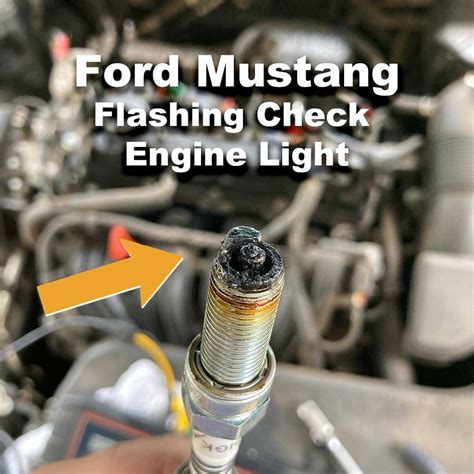
Mustang Check Engine Light: A Comprehensive Guide to Causes, Symptoms, and Solutions
The Mustang check engine light is a crucial indicator that something is amiss with your vehicle's engine or emission control systems. Ignoring this warning light can lead to severe engine damage and costly repairs. In this comprehensive guide, we will delve into the causes, symptoms, and solutions associated with the Mustang check engine light, empowering you to take informed decisions and ensure the longevity of your beloved Mustang.
Understanding the Check Engine Light
The check engine light, often symbolized by an illuminated image of an engine block, is part of the Mustang's onboard diagnostic system. When the light illuminates, it indicates that the engine control module (ECM) has detected a potential issue with the engine or emission control systems. The ECM monitors various sensors and components to ensure optimal engine performance and emissions compliance.
Common Causes of the Check Engine Light
Numerous factors can trigger the illumination of the check engine light in the Mustang. Here are some of the most prevalent causes:
- Oxygen Sensor Malfunction: The oxygen sensor plays a vital role in regulating the air-fuel mixture, ensuring efficient combustion. A faulty sensor can lead to improper fuel-to-air ratios, affecting engine performance and increasing emissions.
- Catalytic Converter Issues: The catalytic converter converts harmful pollutants into less toxic substances. A failing catalytic converter can cause the check engine light to illuminate due to reduced efficiency in converting pollutants.
- Evaporative Emissions System (EVAP) Leaks: The EVAP system is responsible for controlling fuel vapors and preventing them from escaping into the atmosphere. Leaks in this system can trigger the check engine light.
- Mass Airflow Sensor (MAF) Problems: The MAF sensor measures the amount of air entering the engine, which is crucial for proper fuel injection and engine performance. A faulty MAF sensor can cause the check engine light to illuminate.
- Spark Plug or Ignition Coil Issues: Worn-out spark plugs or faulty ignition coils can cause misfires, leading to rough engine operation and illumination of the check engine light.
Symptoms Associated with the Check Engine Light
In addition to the illuminated check engine light, you may also experience other symptoms that indicate an underlying issue with your Mustang's engine or emission control systems. These symptoms can include:
- Engine Performance Problems: The Mustang may exhibit reduced power, hesitation during acceleration, or rough idling.
- Increased Fuel Consumption: A faulty sensor or component can lead to inefficient fuel usage, resulting in lower fuel economy.
- Unusual Noises: Knocking, ticking, or rattling noises from the engine compartment may indicate a problem.
- Exhaust Issues: You may notice excessive smoke or a pungent odor from the exhaust.
- Reduced Emissions Control: The Mustang may fail emissions testing due to compromised emission control systems.
Solutions and Preventive Measures
Addressing a check engine light in your Mustang requires prompt attention from a qualified mechanic. Here are some steps you can take to resolve the issue:
- Diagnostics: A mechanic will connect a diagnostic scanner to the Mustang's onboard computer to retrieve fault codes stored by the ECM. These codes provide valuable insights into the root cause of the problem.
- Repairs: Once the underlying issue is identified, the mechanic will perform necessary repairs or replacements. This may involve replacing faulty sensors, repairing leaks, or addressing ignition system problems.
- Resetting the Check Engine Light: After repairs are complete, the mechanic will reset the check engine light using the diagnostic scanner, allowing you to monitor future engine performance.
To prevent the recurrence of check engine light issues, consider the following preventive measures:
- Regular Maintenance: Adhere to the recommended maintenance schedule for your Mustang, including oil changes, filter replacements, and inspections.
- Quality Fuel: Use high-quality fuel with the appropriate octane rating specified in your Mustang's owner's manual.
- Avoid Aggressive Driving: Excessive speeding, hard acceleration, and abrupt braking can put unnecessary strain on the engine and emission control systems.
- Professional Repairs: Trust qualified mechanics for any repairs or maintenance work on your Mustang to ensure proper diagnosis and resolution of issues.
Conclusion
The Mustang check engine light is a vital signal that something is amiss with your vehicle's engine or emission control systems. By understanding the common causes, symptoms, and solutions associated with this warning light, you can take proactive measures to address issues promptly. Regular maintenance, quality fuel, and professional repairs will help prevent the recurrence of check engine light problems, ensuring the optimal performance and longevity of your beloved Mustang.